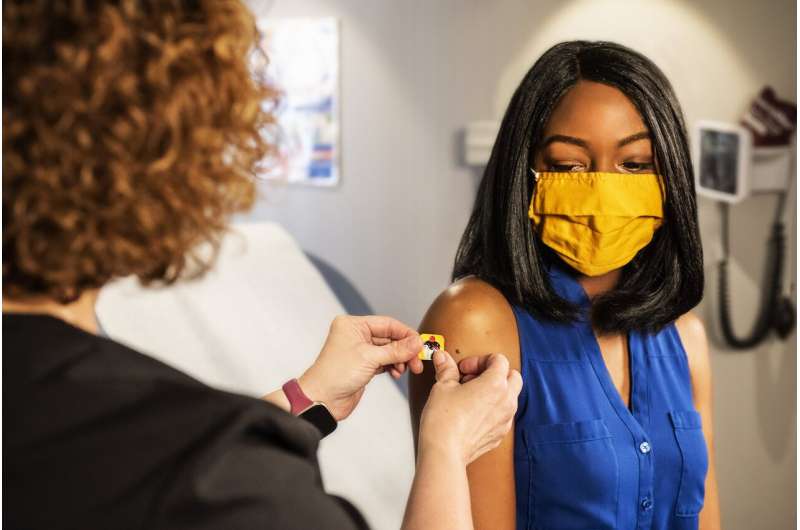
There are very few things as logistically complex as the task that is now getting underway: universal public immunization against COVID-19 to as many as 70-85 percent of the population as quickly as possible, to achieve herd immunity.
So what will success look like?
As a team of researchers dedicated to investigating how health and social systems can help achieve health equity, we have been working to understand the factors that determine vaccine uptake, and what public health systems can do to lower the barriers to immunization in general.
One particularly important metric by which we can measure the efficiency and effectiveness of our public health system is ensuring everyone has access to vaccinations in their own community.
Mass public immunizations
At its core, immunization is a service provided to every resident in a community. As a service, a mass immunization program is simple enough to imagine.
Much like a Boxing Day sale at a store (during non-pandemic periods), everyone lines up for their shot, first-come, first-served, with hopefully enough supply for everyone.
Our current situation, however, is far from straightforward.
For one, we do not have enough supply for everyone yet. It’s also not just one vaccine, it is at least three for now, each with its own storage and distribution requirements.
Second, we can’t deliver vaccines in a centralized location where everyone comes to get their shots. It would likely be dangerous to do so in terms of proximity between people in crowds, but such clinics would also not be equally accessible to all residents.
Access and universalism
Mass immunization clinics will not necessarily provide the most equitable level of access to a COVID-19 vaccine. As with any health-care service, effective immunization strategies will depend on two perspectives: A patient perspective and the public health perspective.
Factors affecting access on the patient side include:
- the patient’s ability to understand and trust health services
- the patient’s values and culture
- the patient’s built and social environment
- the level of available socio-economic resources
- ability to engage with health care and participate in treatment decisions
On the public health side, health services must be approachable, acceptable, available, accommodating, affordable and appropriate to be truly accessible to every patient.
Regarding mass immunization clinics, not everyone has access to transportation, especially when public transit has been reduced because of the pandemic. And many don’t have the luxury to wait in line all day. They may have multiple jobs or lack social support or financial resources to help with child care.
If we’re not careful, we may see the emergence of an “inequality paradox,” where universal programs inadvertently reach privileged populations, and nothing much changes for disadvantaged populations.
We have seen programs such as vaccine campaigns increase inequities in health outcomes rather than reduce it. For example, in Calgary, despite the universal H1N1 immunization campaign, those who provide services to homeless people reported that the clinics ran counter to the needs of those experiencing homelessness. For example, clinics were held in the evening, when those living in shelters with strict evening sign-in times could not attend.
At the same time, while mass immunization clinics were rationing doses, the Calgary Flames received special treatment and earlier dedicated doses.
Our research on the measles, mumps and rubella immunization uptake in Calgary during the 2014 measles outbreak also showed that mass immunization campaigns favored children who live in neighborhoods that had the highest income, highest rates of home-ownership, lowest proportion of Indigenous residents and lowest proportion of immigrant populations.
This is something we need to avoid as we may inadvertently create social groups with persistent and longer-term vulnerability to COVID-19.
Needs-based approach
“Proportionate universalism” is a model of program design that prioritizes building provisions into a universal program to account for various levels of patient access needs.
The proportionate universalism approach looks more closely at removing patient- and system-level barriers, community by community and social group by social group. For example, in Saskatoon during the H1N1 pandemic, public health teams deployed small clinics throughout the neighborhoods where transportation was a problem, and used a health bus to take the vaccine to communities.
This approach can also include adapting education materials and communications about the vaccine and clinics to varying levels of literacy and language needs.
Source: Read Full Article
